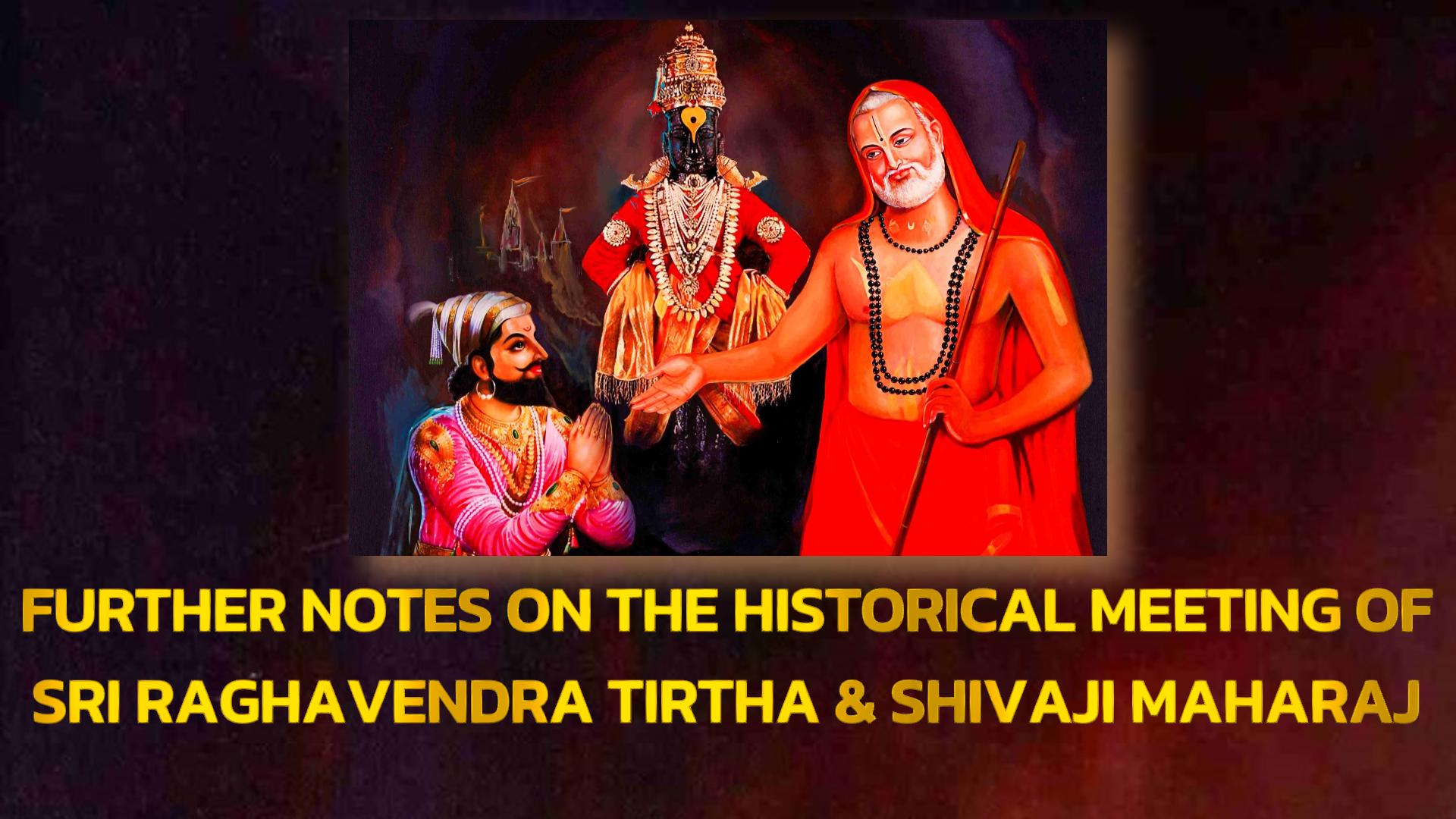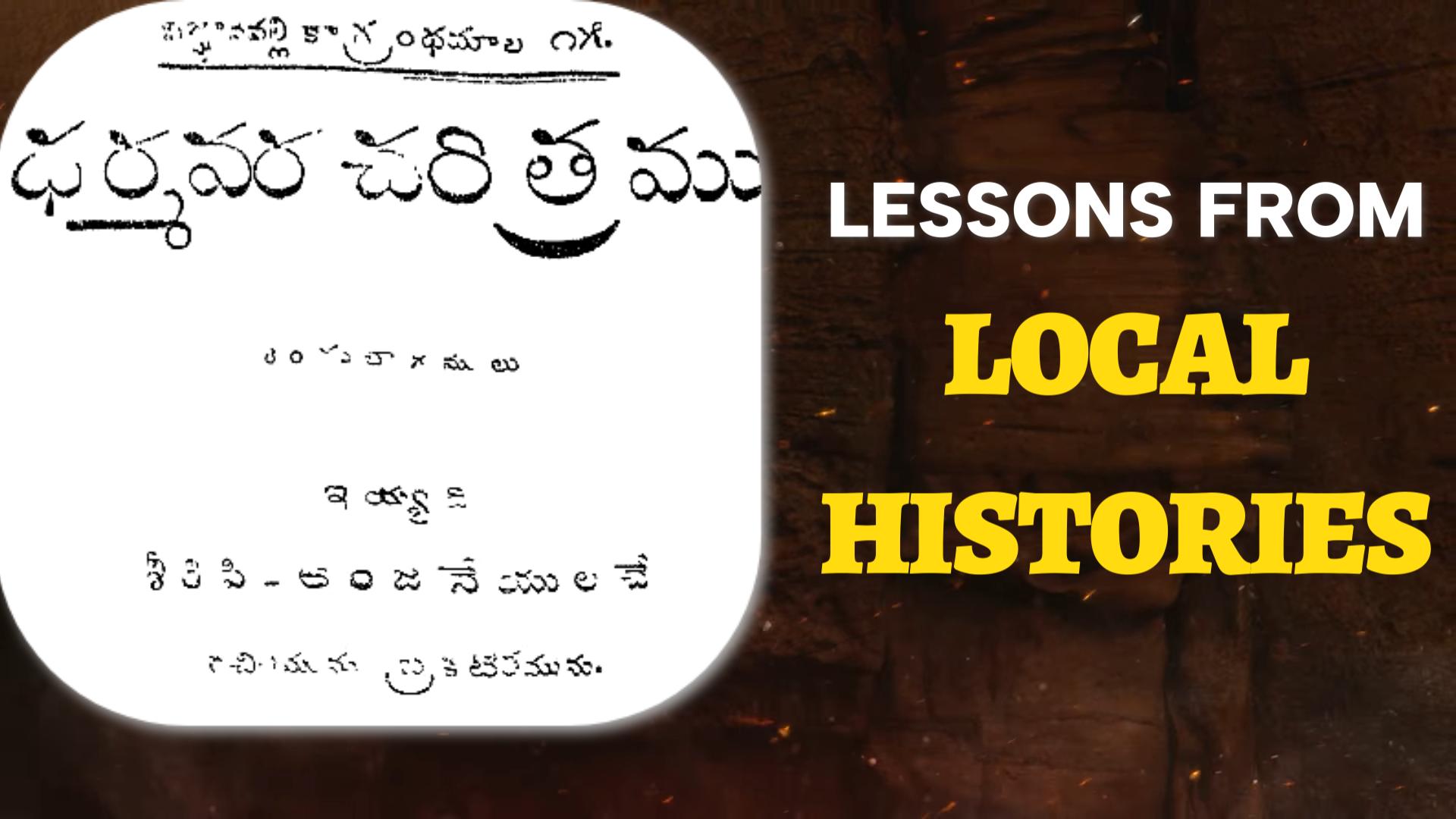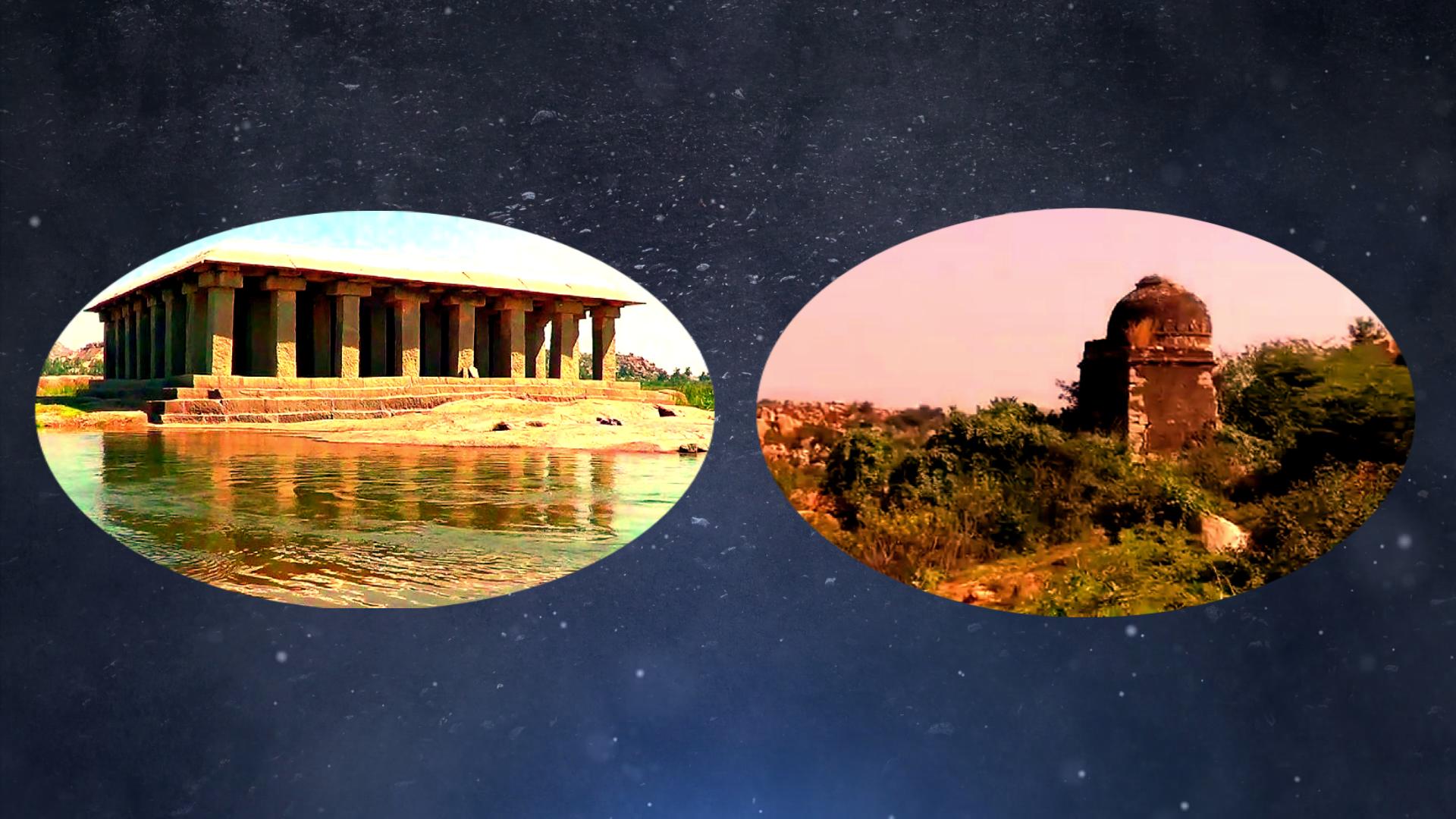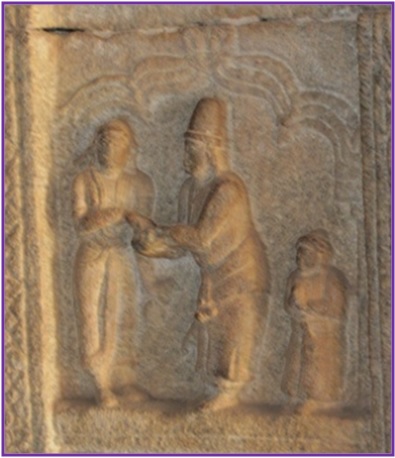Further notes on Sri Raghavendra Tirtha and Chhatrapati Shivaji
INTRODUCTION:
In my previous note on the historical meeting between Sri Raghavendra Tirtha and Chhatrapati Shivaji at Kolhapur, I have given a brief description of the said event.
In that write-up, I have written that this meeting was organised by one Naropant Hanumante, a Madhva Brahmin who was also a minister under Shahji, father of Shivaji.
The focus of this write-up more on the Hanumante family than Sri Raghavendra Tirtha and Chhatrpati Shivaji and tries to assess whether Hanumantes were followers of Dvaita philosophy of Sri Madhvacharya.
———————
NAROPANT HANUMANTE AKA NARASINGA HANMANTE PANT
In the Quarterly Journal of the Mythic Society, 1924 Mr. Venkoba Rao says that one Naro Pant Hanumante alias Narasinga Hanmante Pant was the close confidant of Shahaji, father of Shivaji Maharaj, and he was a Madhva scholar and financier.

Unfortunately, Mr. Venkoba Rao has not provided sources for his claim. But, being a genuine historian, he must have come across with reliable sources at that time is my belief.
In the Proceedings and Transactions of the 9th All India Oriental Conference organised by the then Government of Travencore in the month of December, 1939, Rao Sahib C. S. Srinivasachari, Professor of History & Politics, Annamalai University makes a mention of Naropanth Hanumate.
In his paper titled “Shahji and his achievements in Carnatic” Prof. Srinivasachari says that Naropanth Hanmante was an important courtier of Shahji.

It becomes clear with this that Naropanth Hanumante aka Naropanth Hanmate and his two sons were acted as ministers in the court of Shahji at Bangalore. It also becomes clear that Naropanth was a scholar in Samskruta and can compose poetry as well.
Thus, in the statement of Mr. Venkoba Rao the ‘scholar’ part of Naropant is true.
Here again it is not yet affirmed that he was a Madhva!
But a calculated guess can be made that Naropant could be a Madhva with Prof. Srinivasachari’s statement – “his [Shahji’s] court at Bangalore was splendid…“
There is a possibility that Naropant was a Kannadiga by birth and by extension could have been a Madhva Brahmana!
*****
WERE HANUMANTE AKA HANMANTES MADHVAS?
Dennis Kincaid, in his 1937 published The Grand Rebel, states that the Hanmantes were Brahmanas. Here he was talking about Raghunath Pant Hanmante, the second son of Naropanth Hanumante.

This matches with the descriptions of both Mr. Venkoba Rao and Prof. Srinivasachari that Hanmantes were scholars from Brahmana community.
In a book titled “Shivaji” written by S. V. Reddy (published in 1921), the author says that Naropant Hanmante was the “principal agent” of Shahji in ‘Karnatic.’

This is supports that assumption that Naropant was a Kannadiga or at least was born in Karnataka and hence became the agent of a Maratha chieftain. Mr. Reddy also says that Naropant was a Brahmana and was trained in Mallik Ambar school. It means that he was trained in the accounts and book keeping system developed by Malik Ambar who mostly worked for Ahmednagar Sultanate (was associated with Bijapur sultanate for some time).
Mr. Reddy’s statement is line with Mr. Venkoba Rao’s that Naropant was a ‘financier trained the school of Malikamber.‘
In the biography of Shivaji written by Medha Deshmukh Bhaskaran (published in 2016), the author says that Raghunath Pant Hanmante ‘came from Karnataka to meet Shivaji.’ She also say that Raghunath was well versed with Kannada language and the socio-economical conditions of Karnataka.

As more and more writers & historians of Shivaji (and Peshwas) have written that the Hanmantes were Kannada speaking Brahmans and were well versed in Philosophy. So, it won’t be out of context to assume that they also could be Madhvas by faith!
*****
In “The New History of Marathas – Vol. I” (published 1946), its author Govind Sakharam Sardesai says that Naropant Hanumante was with Shahji when the latter was in service of Bijapur sultanate and later migrated to Bangalore with his master. On the death of Naropanth, his second son Raghunath Pant continued his father’s position as the principal agent of Shahji in Karnataka.

Though the evidences so far collected help in assessing the Kannada & Karnataka background of the Hanumantes there is no verifiable evidence that could link them to Dvaita philosophy and show them as the followers of Sri Madhvacharya.
*****
ONE CLUE (OR EVIDENCE?)
There is a cursory but curious hint given in a book titled “The Rise and Fall of Maratha Empire” (published 1966) written by Mr. Rajaram Vyankatesh Nadkarni.
In this book the author says:

From the above it is understood that Raghunath Narayan Hanmante, the second son of Naropan Hanmante, was a disciple of Samartha Ramdas.
Though debatable, it is popularly known that Samartha Ramdas was either a follower of Dvaita philosophy of Sri Madhvacharya or he was at least influenced by it.

This old painting from Wikipedia of Guru Samartha Ramdas shows him with Dwadasha Urdhvapundra (12 vertical marks) that are the standard of Dvaitins.
It is also won’t be out-of-the-context to mention that Guru Samartha Ramdas has consecrated eight Hanuman murthys across Maharashtra which is a clear act of influence by Sri Vyasatirtha of Dvaita school from Vijayanagara period.
It is historically well established that Sri Vyasatirtha has consecrated 732 Hanuman murthys across South India (mostly in present day Karnataka, Andhra Pradesh, Telangana & parts of Tamil Nadu).
Hence it can be safely concluded that Raghunath Narayan Hanmante and thereby his father and the family were adherents of Dvaita philosophy.
*****
ANOTHER CLUE FROM THE DOCUMENTS OF SRI RAGHAVENDRA SWAMY MATHA, MANTRALAYA
Raja S. Gururajacharya, an author of the much acclaimed Kannada book titled “Kaliyuga Kalpataru” says that an internal document of the Matha called “Shah Amal” has recorded the meeting of Sri Raghavendra Tirtha and Shivaji Maharaj at Kolhapur during the former’s Chaturmasya stay in that holy place.

Sri Gururajacharya also quotes the statement made by Mr. Venkoba Rao in the Quarterly Journal of the Mythic Society, 1924 and supports it with Shah Amal, an internal record of Sri Raghavendra Swamy Matha.
But unfortunately though this document is said to be available in the Matha it is not accessible to public and researchers. If the Matha can make it public through a reproduction of the old manuscript or by making a digital copy of the original, it will be of a great help for individual researchers to make use of its contents for greater good.
CLOSING REMARKS:
Anyhow, it is now becomes clearer that Sri Raghavendra Tirtha met with Shivaji Maharaj at Kolhapur during his Chaturmasya stay in that holy place. And the meeting was arranged by Naropant Hanumante, a Madhva Brahmana and the minister of Shahji, father of Shivaji.
But I have my own observations about this episode and have few questions as well.
- I feel that it was not Naropant Hanumante who facilitated the meeting but Raghunath Narayan Hanmante, the second son of Naropant.
- If the meeting did happen at Kolhapur what was the year?
- If this historical meeting is true then why Raghavendra Vijaya, the biography of Sri Raghavendra Tirtha, is silent on such an important event?
As of now, I do not have answers but hopeful that the clarifications may soon appear with the grace of Gururaya.
*****
PS: I am open for corrections on the assertions made in this article should the scholars and readers suggest to make with evidences.






Namaskara sir,
1)Samarth Ramdasji was an advaiti. His followers now are advaitis, Gondavali Maharaj is also advaiti.
2) The nama in the painting by meru Swami(a shishya of Swami Samarth) isn’t the dwadasha nama. It doesn’t contain heart shaped nama at the middle of chest.
And there is no nama on abdomen too.